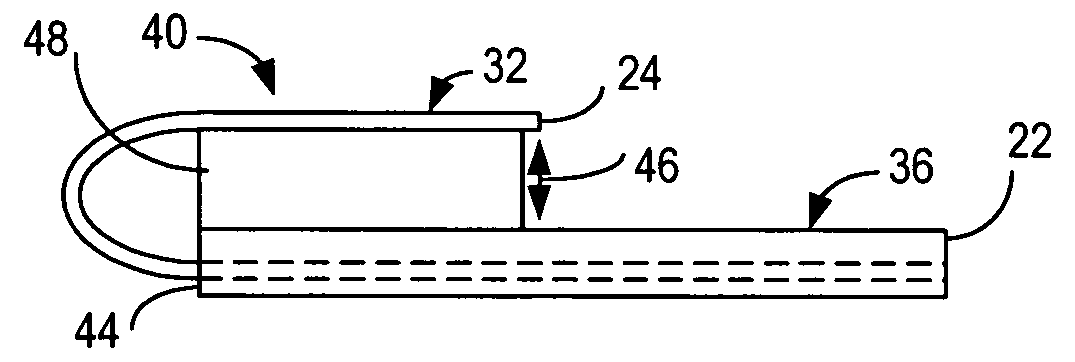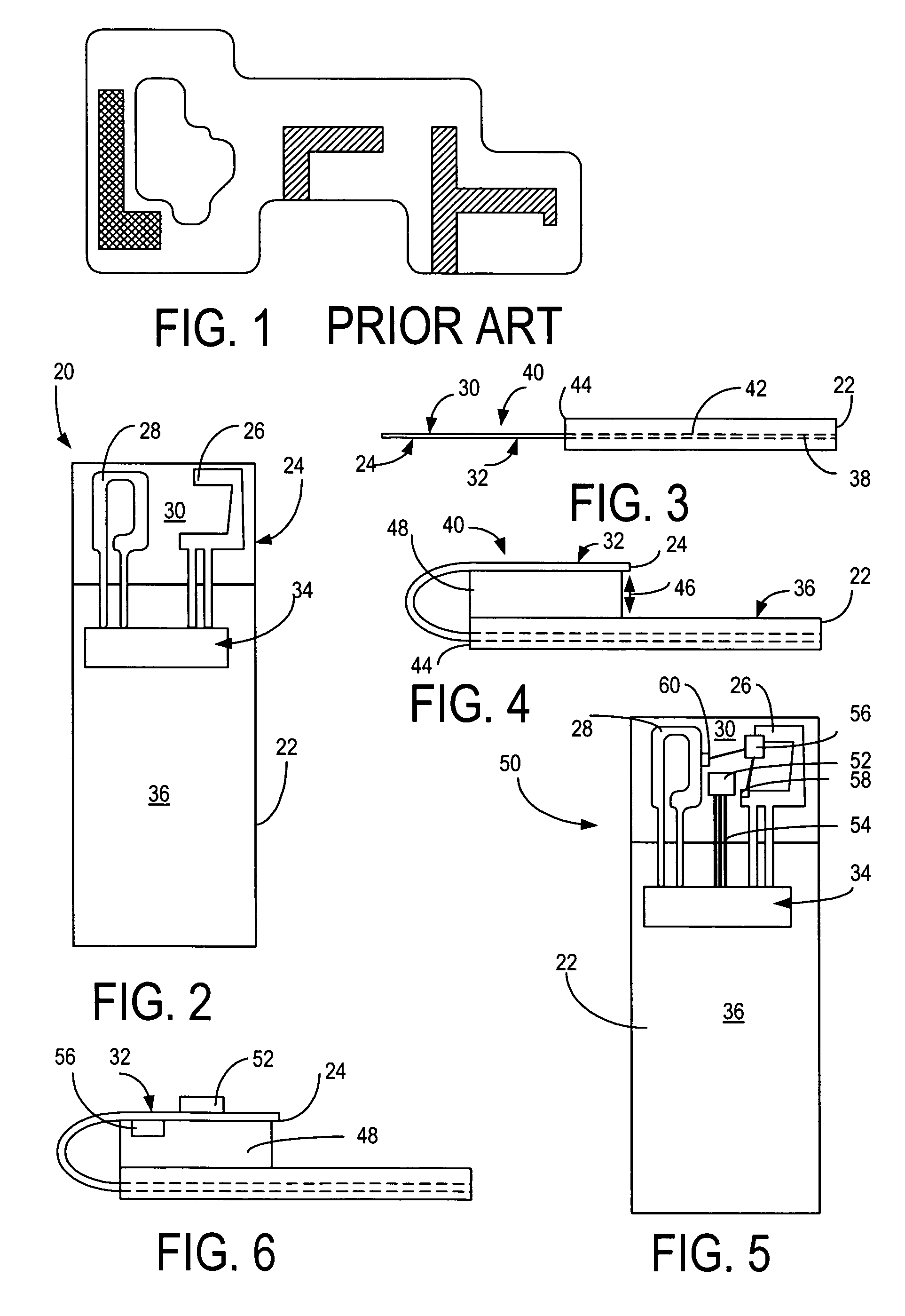Wireless device antenna
a technology of flex-rigid antennas and wireless devices, which is applied in the direction of resonant antennas, substantially flat resonant elements, and elongated active elements, etc., can solve the problems of flex-rigid technology, substantial increase in component parts,
- Summary
- Abstract
- Description
- Claims
- Application Information
AI Technical Summary
Benefits of technology
Problems solved by technology
Method used
Image
Examples
second embodiment
[0052]Referring now to FIGS. 5 and 6, a wireless device antenna generally designated 50 is illustrated therein in the invention wherein the second printed wiring board 24 is arranged to carry surface mount devices (SMD) which may be utilized, for example, tuning the radiating elements 26, 28 carried on the surface 30 of the second printed wiring board 24. In the illustrated embodiment, SMD 52 may carry control circuitry which is electrically connected to the RF transceiver 34 via leads 54 to receive the appropriate electronic control signals to adjust the tuning of the radiating elements 26, 28 by controlling the electronic tuning circuitry carried in the SMD 56 which is electrically connected to the radiating elements 26, 28 at points 58, 60 respectively to change the tuning characteristics of the radiating element pattern as well known and understood by those skilled in the art.
third embodiment
[0053]Turning now to FIGS. 7 and 8, the wireless device antenna is illustrated in a third embodiment and generally designated 70 and includes a first main printed wiring board 22 having a major surface 36 for carrying RF transceiver circuitry generally designated 34. The second printed wiring board generally designated 72 is rigid and manufactured and fabricated at the same time and as part of the same flex-rigid printed wiring board technology process as the main printed wiring board 22 and is flexibly connected to the first main printed wiring board by a flexible element generally designated 88. The flexible element 88 is defined by one or more dielectric layers 82 common to the first main printed wiring board 22 and the second printed wiring board 72 and which dielectric layers 82 extend continuously between the first main printed wiring board 22 and the second printed wiring board 72 such that the portion 90 of the dielectric layers 82 defines the flexible element 88 and permits...
fifth embodiment
[0055]A wireless device antenna is illustrated in FIGS. 11 and 12 in the present invention and is generally designated 140 and includes a first main printed wiring board 142 flexibly coupled to a second printed wiring board 150 by a separate flexible element generally designated 162. The first main printed wiring board 142 includes a first major surface 144 for carrying RF transceiver circuitry 148 and an oppositely disposed second major surface 146. The second printed wiring board 150 includes a first major surface 152 for carrying radiating elements 154, 156. A connector 158 is defined at one end 160 of the flexible second printed wiring board 150. The flexible element 162 includes a connector 164 formed at one end 165 of the flexible element 162 for inter-engaging connection with the connector 158 of the second printed wiring board 150. A second connector 166 is arranged at the opposite end 167 of the flexible element 162 for inter-engagement connection with a connector 168 carri...
PUM
 Login to View More
Login to View More Abstract
Description
Claims
Application Information
 Login to View More
Login to View More - R&D
- Intellectual Property
- Life Sciences
- Materials
- Tech Scout
- Unparalleled Data Quality
- Higher Quality Content
- 60% Fewer Hallucinations
Browse by: Latest US Patents, China's latest patents, Technical Efficacy Thesaurus, Application Domain, Technology Topic, Popular Technical Reports.
© 2025 PatSnap. All rights reserved.Legal|Privacy policy|Modern Slavery Act Transparency Statement|Sitemap|About US| Contact US: help@patsnap.com



